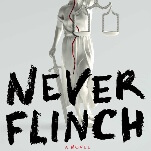An introduction to Rush, the biggest cult band in the world

Pop culture can be as forbidding as it is inviting, particularly in areas that invite geeky obsession: The more devotion a genre or series or subculture inspires, the easier it is for the uninitiated to feel like they’re on the outside looking in. But geeks aren’t born; they’re made. And sometimes it only takes the right starting point to bring newbies into various intimidatingly vast obsessions. Gateways To Geekery is our regular attempt to help those who want to be enthralled, but aren’t sure where to start. Want advice? Suggest future Gateways To Geekery topics by emailing [email protected].
Geek obsession: Rush
Why it’s daunting: Rush has long held the nickname of “the biggest cult band in the world,” and it’s a paradox that fits perfectly. Formed in 1968 by high-school kids in suburban Toronto, the band hit its stride in 1974 with the recruitment of drummer and lyricist Neil Peart, which pushed bassist-singer Geddy Lee and guitarist Alex Lifeson toward ambitious heights. The alchemy between Lee’s keening voice, Lifeson’s elegant guitar, and Peart’s cerebral lyrics and intricate percussion should, by all rights, have been consigned to prog purgatory. Instead, the trio’s knack for strong hooks and surprisingly intimate expression turned Rush into a radio staple in the ’70s and ’80s.
Lee’s voice, though, is an acquired taste that many choose not to acquire—in spite of the fact that he’s a far more versatile and dynamic singer than he’s stereotyped as. Peart’s dabbling in Ayn Rand’s über-individualist philosophy, particularly on the band’s 1976 opus 2112, is another turnoff to many, although Peart’s lyrical worldview is sophisticated and subtle, even when it traffics in wordplay, extended metaphor, and science fiction (often at the same time). On top of that, Rush’s music has spanned and subsumed many genres, from hard rock and prog to reggae and new wave. But there’s no mistaking the fervor of a Rush song and, more than that, the fervor of a Rush fan—even if the group’s handful of easily recognized hits keeps many casual listeners at arm’s length rather than drawing them in.
Possible gateway: Permanent Waves
Why: There are plenty of greatest-hits collections that capture a cross section of what Rush is all about. But the band has always thought in terms of album-length cohesion—concept and otherwise—which makes it better to start out with an individual studio album rather than a refresher course in the tracks that are already familiar to the masses. That said, Permanent Waves—prophetically released on New Year’s Day 1980—is the sound of Rush turning over a new leaf and embracing mainstream radio. The band had celebrated fluke hits before, but there’s a chiseled precision to Permanent Waves that vividly sums up the zeitgeist shift between the ’70s and ’80s, when more extravagant sounds gave way to a clipped, synthesized minimalism. Still, there’s plenty of drama and sprawl to the album’s two radio hits, “The Spirit Of Radio”—a blatant paean to the power of the airwaves that FM programmers reciprocated in kind—and “Freewill,” which takes Peart’s obsession with the philosophy of the individual and turns it into a rallying cry. There’s still a three-part prog song cycle in the form of “Natural Science,” but it’s reined in by Rush standards—and deeper cuts such as the melodic “Entre Nous” round out what remains the most approachable, and most positively representative, of all Rush albums.
Next steps: Coming in only inches behind Permanent Waves is its 1981 follow-up, Moving Pictures. Really, the two albums are of a piece—although Moving Pictures moves more solidly into ’80s territory, it still holds on to the 11-minute track “The Camera Eye” as well as the virtuosic, ultra-proggy instrumental “YYZ.” But with “Tom Sawyer” and “Limelight,” Moving Pictures delivers two more of Rush’s signature anthems, monstrously hooky and infectious songs that mark Peart’s preoccupation with philosophy both fictional and real as well as the struggles of being an introvert at the center of one of the most cultishly loved bands on Earth. Lots of bands have whined about the price of fame, but Rush contemplates its pitfalls with a pensive universality.






































